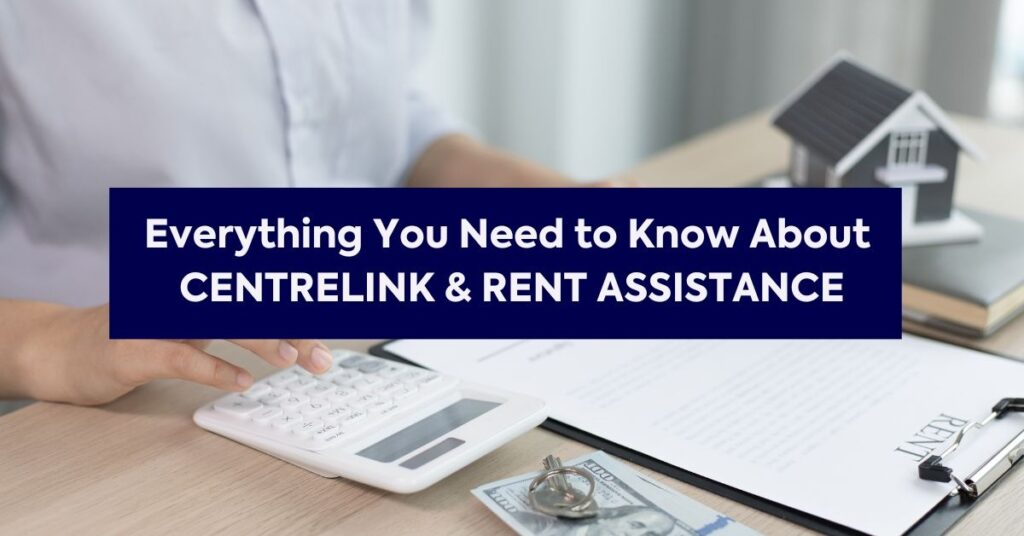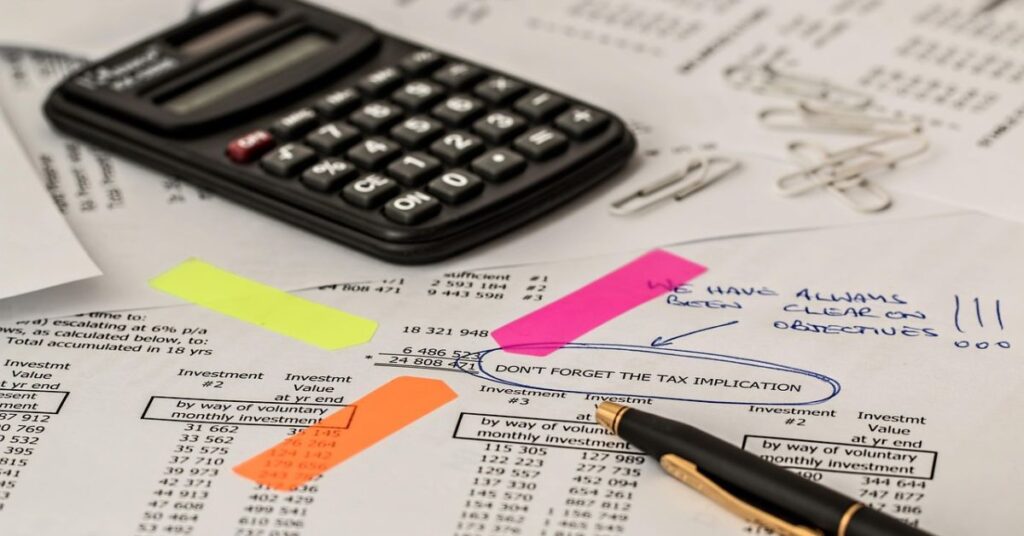Okay, let’s discuss some business finance. Specifically, we’ll discuss the difference between current and non current liabilities. That sounds a little technical, I know, but it is really something you should understand if you are running a business or trying to understand what is going on with the finances of a company. Think about it this way. Some of your debts you need to deal with sooner rather than later, while others, not so much. We will talk about what the difference is and why the distinction is important.
What Are Liabilities? Definitions and Context
In basic terms, a liability is anything a person or business is obligated to pay to someone else. It can be thought of as an obligation that must be settled and could be settled with money, but sometimes through goods or services instead. These obligations can come from a past transaction or event and represent a claim on the company’s assets.
Every liability has an accompanying asset; assets are what you own, and liabilities are what you owe. Liabilities are located on the right-hand side of the balance sheet, which shows a company’s financial position at a moment in time; generally, the balance sheet shows assets on the left and liabilities on the right. Liabilities are important for anyone interested in a company’s current financial health, whether you are an investor, a lender, or just interested in how businesses work and the financial obligations and how to manage them.
What is Liability?
Before knowing the current vs non current liabilities, we should know what a liability is. A liability is a duty or responsibility to another party. In a business context, it’s typically a financial obligation arising from past events, such as borrowing money, purchasing goods on credit, or receiving payment for services not yet rendered. These obligations must be settled in the future. For instance, when a business buys supplies on credit, it creates accounts payable, which is a liability until the bill is paid. Similarly, taking out a loan creates a debt liability. Even something like a warranty offered on a product represents a future obligation to repair or replace it if needed.
How Liabilities Work
Liabilities are the claims by creditors or other parties against the company’s assets. Incurring a liability means the company has received value (like goods or services or cash), and carries an obligation to use some kind of value to settle the obligation sometime in the future. Settling a liability usually requires a payment of economic benefit (cash) or other economic benefits. For example, paying a supplier invoice reduces both cash (an asset) and accounts payable (a liability). Observing the payment timing and payment structure helps differentiate the types of liability and what to be concerned with, which we will discuss next. The important thing is recognising and managing these obligations to stay in business. You may access more information on different types of cash and their management here.
Liabilities vs. Assets: Difference Between Current And Non Current Liabilities
It’s quite useful to have an understanding of the interrelationship assets have with liabilities. Assets are resources owned or controlled by the company and will afford future economic benefits from those resources. Think cash, inventory, buildings, equipment, etc. Liabilities are obligations to parties outside of the company. Assets = Liabilities + Owners’ Equity is the basic accounting equation and is a reflection of this relationship. Owners ‘equity” is nothing more than the owners interest in the company. If we subtract liabilities from assets, that will equal the company’s “equity”. This equation also illustrates that a company’s resources, or assets, are financed by either what it owes to others or the money the owners have “put into” the company. A sound balance sheet will indicate that the total assets are at least enough to cover total liabilities and to “provide a reasonable return” to the owners.
What Counts as Current Liabilities?
When we talk about the difference between current and non current liabilities, we first need to know what current liabilities are. Current liabilities refer to the obligations and debts owed by a company that need to be settled in the near future. Think of these as bills that need to be paid first. The important factor in determining a current liability is whether it is to be paid within one year of the balance sheet date or within the normal operating cycle of the company, whichever is greater. The intended operating cycle is the amount of time it takes a company to buy inventory, sell it, and collect payment for it. Most companies have an operating cycle that is less than one year, so the one-year rule is typically what matters.
So why are these short-term obligations important? They affect a company’s financial health and liquidity, which is its ability to satisfy short-term operational and financial obligations. Without the ability to pay the current liabilities promptly, a company may have difficulty paying its employees, operating its base of operations, and acquiring supplies.
Here are some common features that help identify a current liability:
- Due Date: The most critical factor is the due date. If it’s within 12 months, it’s generally current.
- Purpose: Often related to the normal course of business operations, like buying supplies or paying wages.
- Settlement: Typically settled using current assets (like cash or inventory) or by creating new short-term liabilities.
Let’s break down some common types:
- Accounts Payable (AP): This is the money a business owes to its suppliers for goods or services it has received but hasn’t paid for yet. It’s like a stack of invoices waiting to be cleared. For instance, if a cafe buys coffee beans on credit, the amount owed is an accounts payable. Responsible management of these payments is key, and understanding how services like Afterpay work can be helpful in managing personal finances, though business accounting differs.
- Short-Term Loans: Any loans or borrowings that are due within the next year fall into this category. This could include a line of credit that a business draws on for immediate cash flow needs.
- Accrued Expenses: These are costs that have been incurred but not yet paid. Think of wages owed to employees for work they’ve already done but haven’t been paid for yet, or interest that’s accumulated on a loan but isn’t due for payment until next month.
- Current Portion of Long-Term Debt: If a business has a long-term loan (like a mortgage or a large equipment loan), the part of that loan that’s due within the next year is classified as a current liability. The rest of the loan remains a non-current liability.
- Unearned Revenue: This happens when a customer pays for goods or services in advance, but the business hasn’t delivered them yet. The business must provide those goods or services in the future, making it a liability until it’s fulfilled.
Examples of Current Liabilities You Should Know
When we talk about current vs non current liabilities or the difference between current and non current liabilities, a business’s financial obligations, not all debts are created equal. Some need to be settled pretty quickly, while others can wait a while. Current liabilities are those that are expected to be paid off within a year, or the company’s normal operating cycle if that’s longer. Think of them as the bills that are due soon.
Accounts Payable (AP)
This is probably the most common one you’ll see. It’s the money a business owes to its suppliers for goods or services it has already received but hasn’t paid for yet. It’s like having a stack of invoices on your desk waiting to be processed. Most companies have significant accounts payable because they don’t pay for everything up front.
Wages Payable
This refers to the wages and salaries that employees have earned but haven’t been paid yet. If a company pays its staff every two weeks, this amount will be constantly changing. It’s a direct obligation to the people who keep the business running.
Short-Term Loans and Notes Payable
These are borrowings that need to be repaid within a year. This could include things like a line of credit that’s drawn upon or a specific loan with a short repayment term. It’s important to keep an eye on these as they represent immediate cash outflows.
Accrued Expenses
These are costs that a business has incurred but hasn’t yet received a bill for or paid. Common examples include interest payable on loans, taxes that are due, or even rent that’s owed. They represent expenses that have happened, but the payment is still pending.
Unearned Revenue
This is a bit of a unique one. It’s the money a company receives from a customer for goods or services that haven’t been delivered yet. The company has the cash, but it owes the customer the product or service. Until that obligation is met, it’s recorded as a liability. For example, if a customer pays for a year’s subscription upfront, the portion for the months not yet delivered is unearned revenue.
Current Portion of Long-Term Debt
Even if a company has a big loan that’s due in five years (a non-current liability), the part of that loan that’s due within the next twelve months is classified as a current liability. It’s the immediate chunk of that larger debt that needs attention now. Understanding the current liabilities formula helps in managing these short-term obligations effectively.
What Are Non‑Current Liabilities?

When we are discussing the difference between current and non current liabilities, one must know what non-current liabilities are. Non-current liabilities, also referred to as long-term liabilities, are the financial obligations that a business has that won’t be due in the next 12 months. These liabilities can be understood as the longer-term debts and liabilities the company accepts for stimulating operations and growth for a longer time. These are financial obligations that extend beyond the immediate future.
Key Characteristics of Non Current Liabilities
- Maturity Period: The defining feature is that they are due more than one year from the date on the balance sheet. This timeframe is what separates them from current liabilities.
- Purpose: They are typically used to finance significant, long-term investments like property, plant, and equipment, or to fund major expansion projects.
- Impact on Financial Health: While they represent a commitment, they also indicate a company’s ability to secure funding for substantial future activities.
Common Examples of Non Current Liabilities
- Long-Term Debt: This is a broad category that includes loans and borrowings with repayment terms extending beyond one year. It’s often the most significant non-current liability for many businesses.
- Bonds Payable: When a company issues bonds, it’s essentially borrowing money from investors. Bonds payable represent the total amount owed to these bondholders, provided the maturity date is more than a year away.
- Deferred Tax Liabilities: These are taxes that a company owes but are not due in the current financial year. They arise from differences in accounting and tax rules.
- Pension Obligations: Companies that offer pension plans to their employees have a long-term obligation to fund these retirement benefits.
Understanding the nature and timing of these long-term obligations is vital for assessing a company’s financial stability and its capacity to meet its future financial responsibilities. It gives a clearer picture of the company’s financial structure over the long haul.
Common Types of Non‑Current Liabilities: Difference Between Current And Non Current Liabilities
Long-Term Debt
Long-term debt is likely the most prevalent example of a non-current liability. Long-term debt is money borrowed by a business that is not due within twelve months. Examples include loans from banks with repayment terms extending several years into the future, as well as money raised by selling bonds. Businesses will frequently use long-term debt to finance a long-term investment, such as building a factory or purchasing a business.
Bonds Payable
If a business needs a large amount of debt capital, it may decide to sell bonds. A bond is essentially a loan from an investor to the business. In a bond agreement, the business promises the bondholder to repay the loan balance on a future date (the maturity date), which is often in excess of one year. The business will typically make interest payments periodically until the plan matures. Understanding bonds is critical when analysing the long-term structure of a business’s financial condition.
Deferred Tax Liabilities
This one can be a little trickier. Deferred tax liabilities arise when an entity’s accounting profit is different from its profit for tax laws. In essence, the entity owes taxes, but not at this moment. It essentially means the tax will be paid in succeeding periods. For example, in the circumstances that a corporation uses various depreciation methods for accounting and tax purposes, it can create a deferred tax liability. It is a method of smoothing taxes out over time.
Pension and Other Post-Employment Benefit Obligations
Many entities provide retirement benefits, like pensions, to their employees. The cost of future payment is recognised as a liability on the balance sheet. If the entity has an obligation to pay a pension for a significant time into the future, this will create a substantial non-current liability. It can often be a significant component of a company’s obligation to its workforce over time.
Long-Term Lease Obligations
If a corporation leased its assets, like buildings, equipment, and machinery, for a period longer than a year, those future lease payments would be recorded as a non-current liability. This will often be the case under newer accounting standards that look at many leases as if the corporation owns the asset and simply finances it with a loan.
Balance Sheet Presentation: Current vs Non Current Liabilities
Where They Sit on the Balance Sheet
The balance sheet is a snapshot of a company’s financial position at a specific point in time. It’s structured into assets, liabilities, and equity. When we talk about what the difference is between current and non current liabilities, a key distinction is how they’re presented here. Current liabilities are typically listed first, under their heading, followed by non-current liabilities. This order isn’t just for show; it helps people quickly see what a company owes in the short term versus the long term.
Grouping and Presentation
Companies don’t usually list every single little debt on the balance sheet. Instead, they group similar items. For example, all your short-term supplier bills might be lumped under ‘Accounts Payable’. Similarly, long-term debts like loans from a bank will be grouped under ‘Notes Payable’ or ‘Bonds Payable’ in the non-current section. Sometimes, there’s also an ‘Other Non-Current Liabilities’ category for things that don’t fit neatly elsewhere.
The Current Portion of Long-Term Debt
This is where things can get a bit tricky, and it’s a good example of how current and non-current liabilities interact. Imagine a company took out a big loan five years ago that’s due in ten years. The total loan is a non-current liability. However, the part of that loan that’s due within the next twelve months? That gets moved over and shown as a current liability. It’s still part of the original long-term debt, but because it’s due soon, it needs to be reported in the short-term section. This is important for understanding a company’s immediate cash needs.
Example Presentation
Here’s a simplified look at how liabilities might appear:
Liabilities
Current Liabilities
- Accounts Payable
- Wages Payable
- Interest Payable
- Current Portion of Long-Term Debt
- Unearned Revenue
Non-Current Liabilities
- Notes Payable (due after one year)
- Bonds Payable
- Deferred Tax Liabilities
- Current liabilities are listed before non-current liabilities on the balance sheet.
- Similar debts are grouped into single line items.
- The portion of long-term debt due within a year is reclassified as a current liability.
Edge Cases: Difference Between Current And Non-Current Liabilities
Refinancing Debt: A Shifting Timeline
Sometimes, a company might have a loan that’s due within the next year, making it a current liability. But what happens if they manage to refinance that debt before the year is up? If the new loan agreement pushes the repayment date out beyond 12 months, that portion of the debt can then be reclassified as a non-current liability. This is a common practice, especially when companies want to manage their short-term cash flow better. It’s important to note that the classification hinges on the terms of the debt at the balance sheet date. So, even if refinancing is in the works, if it’s not finalised by that date, the original classification stands.
Covenants: More Than Just Rules
Loan agreements often come with conditions, known as covenants. These are promises the borrower makes to the lender, and they can significantly impact how liabilities are classified. For instance, a covenant might require a company to maintain a certain level of working capital or a specific debt-to-equity ratio. If a company breaches a covenant, the loan might become immediately repayable, even if its original due date is far in the future. This could turn a non-current liability into a current one overnight. Understanding these covenants is vital for accurate financial reporting and analysis. Engaging a banking and finance lawyer is crucial for navigating complex loan agreements and financial transactions. They help scrutinise covenants, negotiate favourable terms, and ensure compliance with regulations like AML/CTF and data privacy. Thorough due diligence is essential to identify risks, verify information, and protect your interests, preventing costly mistakes, fines, and legal disputes. Legal advice is a strategic investment for safeguarding assets and ensuring sustainable growth in finance.
Here’s a quick look at how covenant breaches can affect classification:
- Immediate Repayment: A breach can trigger a clause making the entire loan due immediately.
- Waiver or Amendment: The lender might agree to waive the breach or amend the covenant, potentially keeping the debt non-current.
- Restructuring: The company might need to restructure the debt, which could change its classification.
It’s a bit like a game of chess; every move with debt and covenants needs careful consideration to avoid unexpected financial penalties.
Key Ratios Involving Liabilities: Difference Between Current And Non-Current Liabilities
Understanding the difference between current and non-current liabilities is pretty important for anyone looking at a company’s financial health. It’s not just about knowing what a company owes, but when it owes it. This distinction helps us figure out if a business can actually meet its short-term obligations without a hitch, or if it might be heading for trouble down the track.
Liquidity Ratios: Can the Business Pay its Bills Soon?
When we talk about liquidity, we’re really asking if a company has enough readily available assets to cover its debts that are due within the next year. Think of it like your own personal finances – can you pay your rent and credit card bills this month with the cash you have or expect to get soon? Several ratios help us gauge this:
- Current Ratio: This is a classic. It’s calculated by dividing current assets by current liabilities. A ratio above 1 generally suggests a company has more current assets than current liabilities, which is a good sign for short-term solvency.
- Quick Ratio (Acid-Test Ratio): This is a bit stricter than the current ratio. It takes current assets, subtracts inventory (because inventory can sometimes be hard to sell quickly), and then divides that by current liabilities. It gives a more conservative view of immediate liquidity.
- Cash Ratio: Even more conservative, this ratio looks at a company’s most liquid assets – cash and cash equivalents – and divides that by its current liabilities. It shows how well a company can pay off its current debts using only its most liquid resources.
Solvency Ratios: Can the Business Survive Long-Term?
Solvency, on the other hand, looks at the bigger picture. It’s about whether a company can meet all its financial obligations, both short-term and long-term, over an extended period. This is where non-current liabilities come into play. These ratios help us understand a company’s long-term financial stability and its ability to manage its overall debt load.
- Debt-to-Equity Ratio: This compares a company’s total liabilities to its shareholder equity. A high ratio might mean a company is relying heavily on debt financing, which can be risky. It’s a good way to see how much of the company is financed by debt versus owner investment.
- Debt-to-Assets Ratio: This ratio shows what proportion of a company’s assets is financed through debt. A higher percentage indicates greater financial risk, as more assets are claimed by creditors.
- Interest Coverage Ratio: This measures a company’s ability to pay the interest on its outstanding debt. It’s calculated by dividing earnings before interest and taxes (EBIT) by interest expense. A higher ratio means the company is more comfortably able to cover its interest payments.
Analysing these ratios together gives a much clearer picture than looking at any single one in isolation. A company might have great liquidity but be struggling with long-term debt, or vice versa. It’s all about balancing short-term needs with long-term sustainability. Understanding how liabilities are classified is the first step to making sense of these important financial metrics.
Common Mistakes in Classification—and How to Avoid Them
Misinterpreting the One-Year Rule
This is probably the most common slip-up. Remember, current liabilities are those due within one year or the company’s operating cycle, whichever is longer. It’s not just about the calendar year; it’s about the business cycle. For instance, a loan that’s due in 13 months is non-current. But if a portion of a long-term loan becomes due within the next 12 months, that specific portion needs to be reclassified as a current liability. Getting this timing wrong can really mess with your working capital calculations.
Incorrectly Classifying Deferred Tax Liabilities
Deferred tax liabilities can be a bit tricky. If a deferred tax liability is expected to reverse (meaning it will become a tax payment) within the next year, it should be treated as current. If it’s expected to reverse in more than a year, it’s non-current. Misclassifying short-term deferred tax assets as non-current can negatively impact liquidity ratios. This error might lead to unnecessary draws on credit facilities or breaches of loan covenants, which is never a good look for a business. Classifying short-term deferred tax assets as non-current can negatively impact liquidity ratios.
Overlooking Embedded Obligations
Sometimes, liabilities aren’t explicitly labelled as ‘payable’. Think about things like warranty obligations or potential legal settlements. These need to be estimated and recognised if they are probable and can be reasonably estimated. If these estimated obligations are likely to be settled within a year, they’re current. Failing to account for these can understate your current liabilities.
Ignoring Contractual Terms
It’s vital to read the fine print. Loan agreements or other contracts might contain clauses that change the classification of a liability. For example, a debt that’s technically due in two years might become immediately payable if the company breaches a financial covenant. This ‘demand’ feature can shift a non-current liability to current if the breach is likely or has already occurred.
Not Adjusting for Refinancing Agreements
If a company has a plan to refinance a short-term debt obligation into a long-term one, and that plan is already in place before the financial statements are issued, it might be possible to classify it as non-current. However, this requires solid evidence and adherence to specific accounting rules. Simply intending to refinance isn’t enough; the actual arrangements need to be in place.
Navigating the tricky bits of classification can be a real headache, but don’t stress! We’ve all made blunders when sorting things out. Want to get better at it and avoid common slip-ups? Head over to our website for more tips and tricks to help you master classification.
Frequently Asked Questions
What exactly is a liability for a business?
Think of liabilities as debts or money your business owes to others. They’re like IOUs that need to be paid back. These can be for things like supplies you’ve bought on credit or loans you’ve taken out.
What’s the main difference between current and non-current liabilities?
The main difference is the timeframe. Current liabilities are short-term debts due within a year, while non-current liabilities are long-term debts due in over a year. This timing is super important for understanding how healthy your business’s finances are.
How do businesses show these liabilities on their balance sheets?
On a business’s balance sheet, current liabilities are listed first, usually at the top of the liabilities section. Non-current liabilities are then listed below them, showing the shorter-term debts before the longer-term ones.
Why is it important to know the difference?
Knowing the difference helps you manage your business’s cash flow. It tells you how much money you need to have ready to pay off soon (current liabilities) versus what you can plan for over a longer period (non-current liabilities). This helps avoid nasty surprises.
Can you give me some common examples of each type?
Common examples of current liabilities include accounts payable (money owed to suppliers), short-term loans, and wages or taxes that are due soon. For non-current liabilities, think of long-term loans, bonds payable, or deferred tax liabilities.
What if a long-term debt has a payment due soon?
Sometimes, a long-term debt might have a portion that’s due within the next year. This part is treated as a current liability on the balance sheet, even though the bulk of the debt is long-term. It’s all about when the payment is due.











